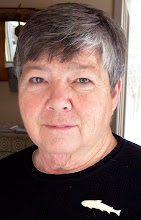Listen to Julian Treasure’s TED TALK. Julian is a sound expert. I fell into his talk by accident. This happens to me often and it’s one of the great gifts of our computer age. I start with a word or two heard on National Public Radio which leads to a Google search and WHAM-O! There’s Julian Treasure talking about sound. Magic!
Julian claims that listening is highly undervalued, that we modern people only retain about 25% of what we hear. But we move into states of creativity or stress depending on even minor sounds around us. One test using typical subdued office noises showed a drop in worker productivity; when the workers were moved into quiet, contained offices, productivity skyrocketed 66%.
So much for “open office concept.”
A petty crime wave (purse snatching, car break ins) hit Lancaster, California, and the locals tried all the usual crime fighting methods until finally, in desperation, someone suggested calling Julian Treasure. He proposed drowning the 5-6 block area with sound. Hundreds of Bose loud speakers were installed and played “white sounds” - birds chirping, waves crashing, wind rustling leaves -(softly) for 5 hours a day. Immediately, crime dropped by 15%.
O.K., I ‘m a skeptic. I remember the stories circulated in the 1950s about buyer manipulation. Buried within movie comics or news reels, subliminal messages were embedded (Go buy Good ’n Plenty now! Go outside for a smoke!) Somehow, just as forever linking school desks with hydrogen bomb drills, manipulating human impulses with sound raises - for me - the Manchurian Candidate and the scariest possibility of mind control.
Julian has confronted people like me and answers the question straight on. Are we equally fearful of mind control as we walk in the woods? wonder through a garden? listen to an orchestra? What about architecture? Unknowingly, we respond - and conform our actions - to color, shape, quality of light or lack of it, ceiling height and volume. In fact, a wonderful book - A PATTERN LANGUAGE written by Christopher Alexander in 1977 and based on proven theories of his team - describes why humans are “happy” in environments with certain measurable and repeatable characteristics. The theory presents 253 “patterns” that form a language that any layperson may use to design optimum architecture, urban and livability spaces.
Alexander and the unit of scientists included such patterns as ratio of window to wall area, optimum lengths of city blocks, best mixes of business to residential use. I remember feeling as though I’d opened Hammurabi’s Code for Contemporary Life and Design when I discovered these theories!
Add Julian Treasure and sound? If successful/fulfilling patterns for livability can be traced back to repeated patterns in nature, then why shouldn’t the same be true for sound? How about I change “human manipulation” to "human response"? I’ll feel better about the discussion.
`````````````````````````````
 |
| JACQUIE'S 4TH FLOOR STUDIO |
Jacquie Germanow has a wonderful new studio on the 4th floor of her family’s industrial complex. She gave us a tour last week. The windows look over a major still-functioning industrial section of Rochester, dominated by the Genesee Brewery and finally, the river. Light pours into her space on three sides. I would stare out those windows all day and never get any work done! She is clearly more disciplined than I am.
Here are some pictures.
 |
| JACQUIE GERMANOW/ARTIST |


No comments:
Post a Comment